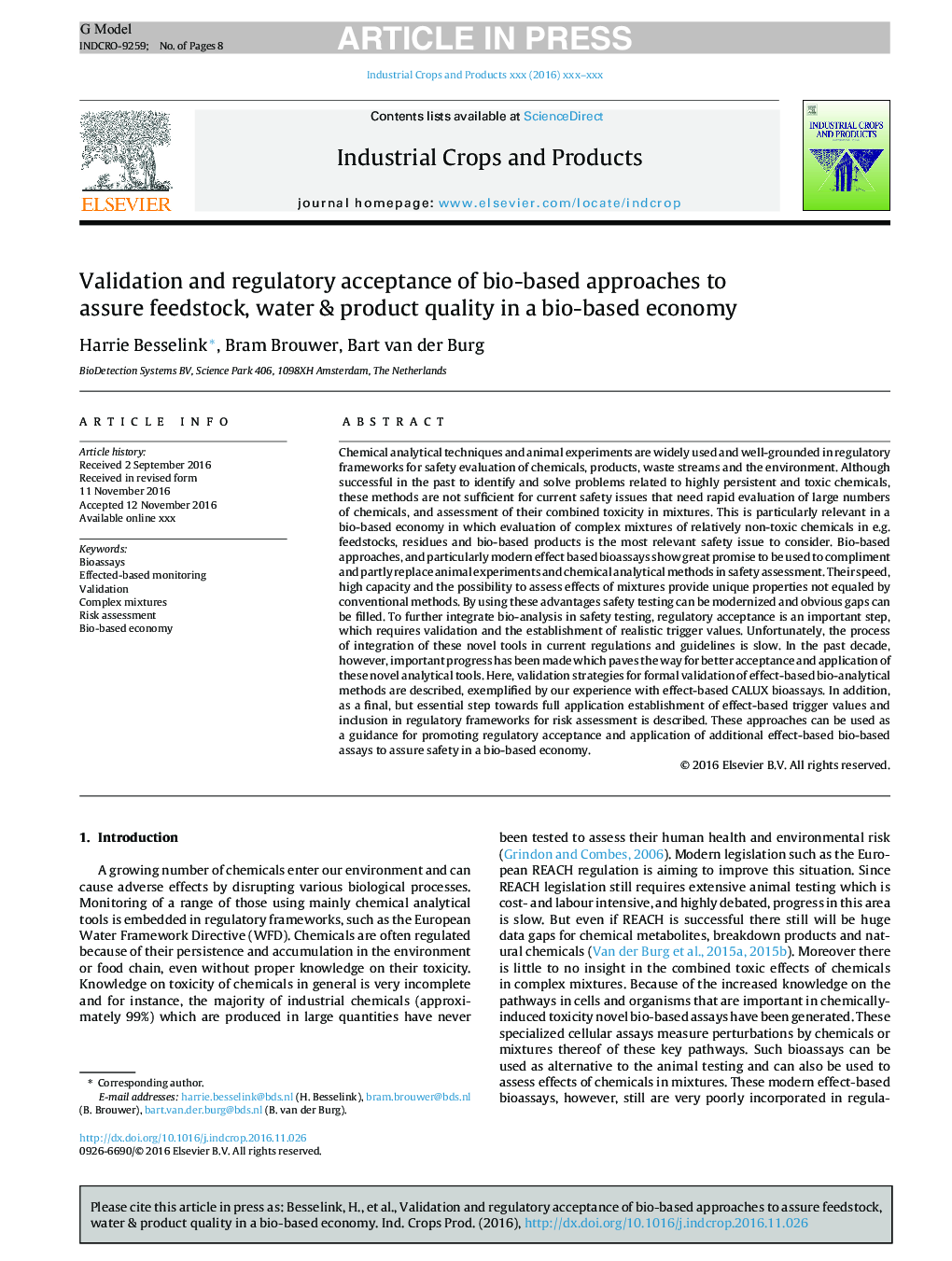| Article ID | Journal | Published Year | Pages | File Type |
|---|---|---|---|---|
| 5762016 | Industrial Crops and Products | 2017 | 8 Pages |
Abstract
Chemical analytical techniques and animal experiments are widely used and well-grounded in regulatory frameworks for safety evaluation of chemicals, products, waste streams and the environment. Although successful in the past to identify and solve problems related to highly persistent and toxic chemicals, these methods are not sufficient for current safety issues that need rapid evaluation of large numbers of chemicals, and assessment of their combined toxicity in mixtures. This is particularly relevant in a bio-based economy in which evaluation of complex mixtures of relatively non-toxic chemicals in e.g. feedstocks, residues and bio-based products is the most relevant safety issue to consider. Bio-based approaches, and particularly modern effect based bioassays show great promise to be used to compliment and partly replace animal experiments and chemical analytical methods in safety assessment. Their speed, high capacity and the possibility to assess effects of mixtures provide unique properties not equaled by conventional methods. By using these advantages safety testing can be modernized and obvious gaps can be filled. To further integrate bio-analysis in safety testing, regulatory acceptance is an important step, which requires validation and the establishment of realistic trigger values. Unfortunately, the process of integration of these novel tools in current regulations and guidelines is slow. In the past decade, however, important progress has been made which paves the way for better acceptance and application of these novel analytical tools. Here, validation strategies for formal validation of effect-based bio-analytical methods are described, exemplified by our experience with effect-based CALUX bioassays. In addition, as a final, but essential step towards full application establishment of effect-based trigger values and inclusion in regulatory frameworks for risk assessment is described. These approaches can be used as a guidance for promoting regulatory acceptance and application of additional effect-based bio-based assays to assure safety in a bio-based economy.
Related Topics
Life Sciences
Agricultural and Biological Sciences
Agronomy and Crop Science
Authors
Harrie Besselink, Bram Brouwer, Bart van der Burg,
